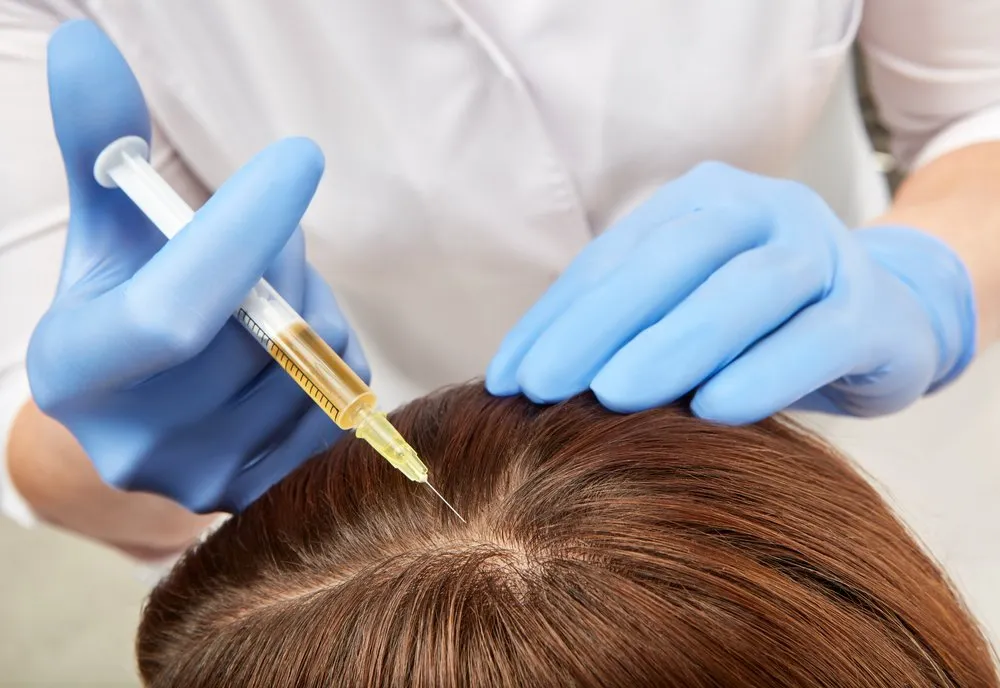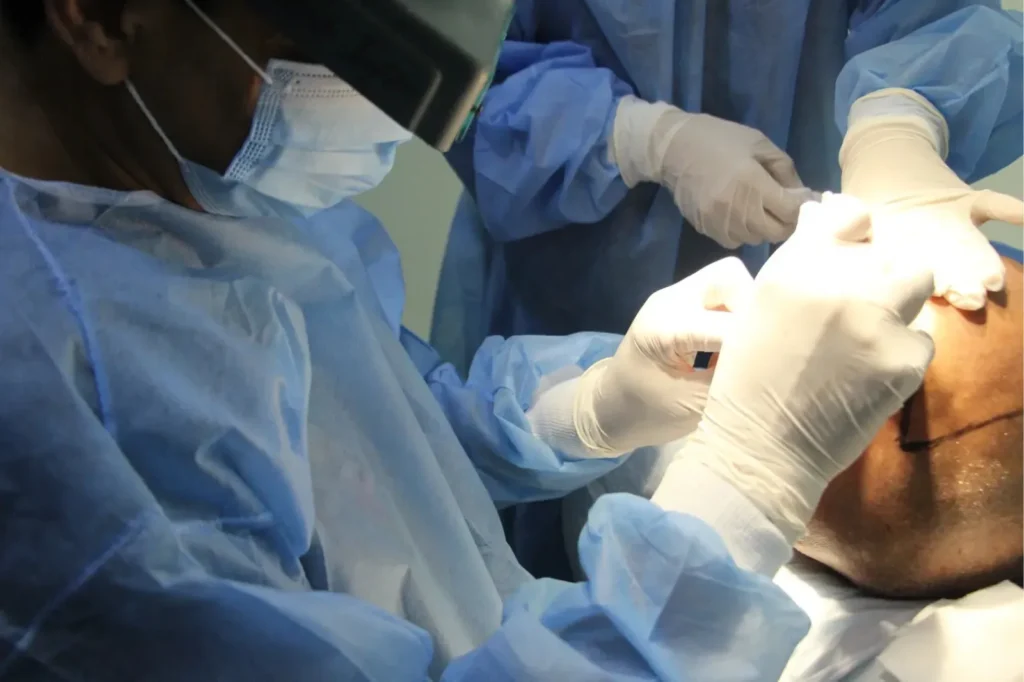Joe Rogan hair loss has sparked curiosity for years, especially among fans wondering what went wrong and why he talks openly about it.
In this post, we unpack Joe Rogan’s hair loss journey, explore what led to it, and uncover the valuable lessons others can learn from his experience. Whether you’re considering hair restoration or embracing baldness, this article offers expert-backed insights, modern treatment comparisons, and trusted medical advice to guide your next steps.
Who Is Joe Rogan and Why Is His Hair Loss a Talking Point?

Joe Rogan’s Influence in Pop Culture and Media
Joe Rogan is one of the most recognized names in podcasting, comedy, UFC commentary, and pop culture. With a massive following on The Joe Rogan Experience, his opinions influence millions globally. That level of visibility naturally brings personal topics like hair loss under scrutiny.
Why His Hair Journey Attracts Attention
Unlike many celebrities who shy away from discussing aesthetic changes, Rogan has openly talked about his failed hair transplant and his choice to shave his head. This transparency has made his story relatable and educational for many men facing similar issues.
The Role of Celebrity Transparency in Hair Loss Discussions
Celebrities often shape public perceptions of beauty and grooming. Rogan’s willingness to speak candidly about his hair loss challenges helps normalize conversations around male pattern baldness and the emotional toll it can take.
Joe Rogan’s Hair Loss Timeline
Early Signs of Hair Loss (Photos from UFC and Fear Factor Era)
In his early TV days, Joe Rogan’s hairline showed signs of recession, particularly at the temples, a common symptom of androgenetic alopecia. By his Fear Factor hosting years in the early 2000s, the thinning had become more visible.
Alleged Hair Transplant in the 1990s — What Went Wrong?
Rogan has mentioned receiving a hair transplant in the ’90s, which ultimately didn’t deliver lasting results. This could be due to:
- Use of outdated strip surgery methods (FUT),
- Poor donor area planning,
- Lack of long-term maintenance therapy (like Finasteride).
Transition to Shaving His Head: Public Statements and Interviews
After the failure, Rogan embraced a shaved-head look and regularly discusses it on his podcast. He often jokes about the procedure, reflecting a level of acceptance that many men strive for.
What Joe Rogan Has Said About His Hair Loss
Quotes from His Podcast (e.g., The Joe Rogan Experience)
On his podcast, Rogan stated:
“I had a hair transplant that didn’t take… so I just started shaving my head and never looked back.”
He’s also expressed skepticism toward hair restoration in general, particularly older techniques.
His Views on Hair Transplants and Accepting Baldness
Rogan’s message leans toward self-acceptance and embracing baldness as a masculine trait. He believes confidence isn’t tied to hair and often emphasizes discipline and health over looks.
Psychological Aspects: Confidence, Masculinity, and Appearance
Losing hair can impact a man’s self-image. Rogan’s journey highlights how embracing hair loss can be empowering, especially when the alternative (failed restoration) doesn’t align with expectations.
Did Joe Rogan Get a Hair Transplant?
Analyzing His Scalp and Hairline Over Time
Before-and-after comparisons suggest he likely underwent a strip surgery, as there’s visible scarring on the back of his scalp in some close-up images. His hairline appears inconsistent with natural regrowth.
What Went Wrong with His Alleged Hair Transplant?
Possible reasons for failure:
- Poor graft survival rate
- Subpar technique or outdated method
- Lack of post-op care or DHT suppression
Lessons from Rogan’s Experience for Other Men Considering Hair Restoration
Key takeaway: A hair transplant isn’t a one-time fix. It must be:
- Performed by a certified expert,
- Supported with ongoing treatments like Finasteride or PRP,
- Based on realistic expectations.
What Causes Male Pattern Baldness Like Joe Rogan’s?
The Science Behind Androgenetic Alopecia
Male pattern baldness affects up to 50% of men by age 50. It’s caused by genetics and the hormone dihydrotestosterone (DHT), which shrinks hair follicles over time.
Genetics, DHT, and Other Contributing Factors
- Family history (especially the maternal side)
- Elevated DHT sensitivity
- Lifestyle stress, poor diet, and inflammation can accelerate loss
When and Why Men Start Losing Hair
Hair loss can begin as early as the late teens or early 20s. In Rogan’s case, his hair began receding in his 30s, which aligns with typical androgenetic alopecia progression.
Modern Hair Loss Treatments Joe Rogan Could Have Tried Today
FUE Hair Transplant vs. Strip Method
FUE (Follicular Unit Extraction) is today’s gold standard, offering:
- No linear scar
- Natural results
- Faster healing
Strip methods like Rogan’s come with more risk, visible scarring, and longer downtime.
PRP Therapy, Exosomes, and Stem Cells
Joe may have benefited from:
- PRP (Platelet-Rich Plasma): Stimulates regrowth
- Exosomes: Regenerative therapy with early success
- Stem Cell Therapy: Promising but experimental

Medications: Finasteride, Minoxidil, or Topical Alternatives
Finasteride blocks DHT, while Minoxidil boosts blood flow. These are first-line defenses post-transplant or during early hair loss.
Lifestyle Interventions and Supplements
Nutrient-dense diets, stress management, and supplements like biotin, saw palmetto, and marine collagen support hair health.
Should You Follow Joe Rogan’s Approach to Hair Loss?
Embracing the Bald Look with Confidence
For many, shaving the head can be freeing. Joe Rogan made it part of his identity, showing that confidence isn’t just skin deep.
When to Consider Hair Restoration
- Hair loss impacts your self-esteem
- You want to restore a youthful hairline
- You’re open to long-term maintenance
Self-Acceptance vs. Cosmetic Intervention: A Balanced Perspective
There’s no “right” choice—only the one that works for you. Joe’s experience offers insight, but modern medicine offers more options today.
Common Mistakes in Early Hair Transplants
- Poor graft handling
- Lack of artistic hairline planning
- Inadequate post-op care
What Today’s Surgeons Recommend for Similar Cases
- Start with DHT suppression
- Choose FUE over strip
- Prioritize realistic goals and long-term planning

FAQs About Joe Rogan and Hair Loss
Did Joe Rogan get a hair transplant?
Yes, Rogan has stated he underwent a transplant in the 1990s, which failed.
Why did Joe Rogan’s hair transplant fail?
Likely due to outdated techniques, poor planning, or lack of ongoing therapy.
What treatments did Joe Rogan try for his hair loss?
He had a hair transplant and eventually chose to shave his head instead of trying medications or modern treatments.
Is shaving your head the best option for hair loss?
It depends on personal preference. Some embrace baldness, while others pursue restoration.
What can we learn from Joe Rogan’s hair journey?
Do your research, consult an expert, and choose treatments that align with your long-term goals.
Final Thoughts: What Joe Rogan’s Hair Loss Teaches Us
Joe Rogan’s candid approach to hair loss reminds us that every man’s journey is unique. Whether you decide to embrace baldness or explore advanced hair restoration, the key is making an informed, confident decision. With the right guidance and technology, today’s options far surpass those of the 1990s.
Book a consultation with Dr. Rana Irfan in Islamabad today to explore personalized, medically proven treatments—whether it’s FUE, PRP, or a non-surgical approach. Confidence starts with the right care.
